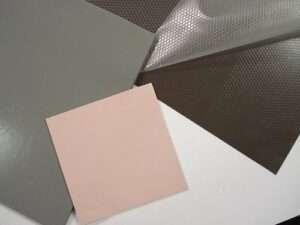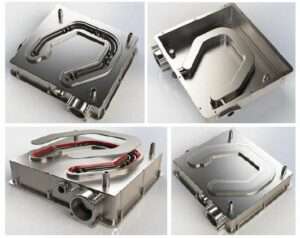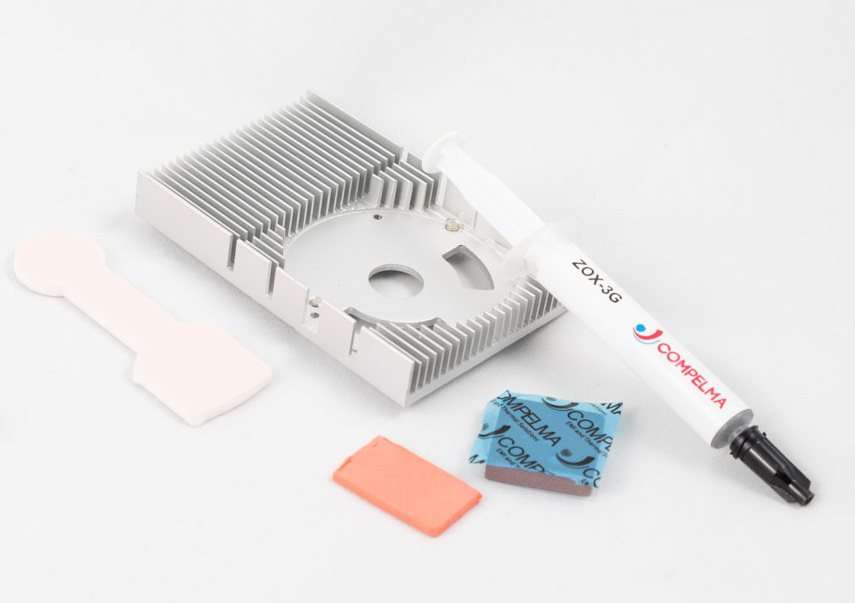Thermal management is essential in the industrial sector. It involves controlling and regulating the temperature of systems to optimize performance and extend their lifespan. Industrial equipment, whether electronic, mechanical, or chemical, often generates significant amounts of heat, which, if not properly dissipated, can lead to malfunctions, failures, and safety hazards. Thermal management techniques and technologies, such as heat sinks, fans, and liquid cooling systems, are implemented to maintain stable operating temperatures. Here are the details.
Thermal Management: Definition and Functionality
Thermal management is the discipline of controlling and regulating the temperature of systems and devices to ensure performance. This involves using various technologies to dissipate excess heat generated by operating components:
- Heat sinks conduct and dissipate heat from electronic components through conduction, radiation, and convection.
- Fans are used to increase airflow around components, aiding in heat removal through forced convection.
- Liquid cooling systems absorb heat from components and transport it to a radiator for dissipation.
Ultimately, thermal management works by:
- Ensuring efficient heat dissipation.
- Preventing components from overheating.
Effective thermal management also improves system reliability and reduces failure risks. It plays a crucial role in energy efficiency by minimizing heat loss and optimizing energy use.

The Importance of Thermal Management in Various Industries (Automotive, Electronics, Renewable Energy, etc.)
Thermal management is a vital component in nearly all industries as it directly impacts the performance, reliability, and safety of systems and equipment. Equipment operates at optimal performance levels when maintained at appropriate temperatures. Overheating can reduce the efficiency of machinery and electronic devices, leading to productivity losses.
In certain industries, such as automotive or aerospace, overheating can result in significant safety risks, including fires and explosions. Maintaining systems at safe temperatures is essential to prevent these hazards.
Ignoring thermal management or considering it secondary can have serious consequences:
- Frequent failures, breakdowns, downtime.
- More frequent equipment replacement.
- Safety risks.
- Higher costs.
What Are the Challenges Related to Thermal Management of Electronic Equipment?
Thermal management of electronic equipment presents several challenges:
- Modern electronic devices generate significant heat on small surfaces, making management difficult.
- With the trend towards miniaturization of electronic components, there is less space available for integrating cooling solutions. Traditional methods, like large heat sinks, are often impractical for compact devices.
- Thermal interface materials placed between components and heat sinks must have high thermal conductivity and low thermal resistance to be effective. Finding durable materials that meet these criteria can be challenging.
Thermal management solutions must be seamlessly integrated into the overall equipment design. This requires close collaboration between thermal engineers, circuit designers, and manufacturers to ensure cooling solutions do not compromise functionality or aesthetics.
In summary, managing the thermal aspects of electronic equipment is complex and requires a multidisciplinary approach to address the challenges. Continuous innovations make it possible to develop effective solutions that ensure electronic devices’ performance.

Thermal Management at Compelma
Compelma offers various components for the thermal dissipation of electronic projects. You can choose custom heat sinks that dissipate heat from electronic equipment through conduction, convection, or radiation. These heat sinks can be enhanced with fans, thermoelectric modules, or cold plates. They are made from standard profiles or custom-created and machined to meet specific client and project requirements.
Thermoelectric Peltier modules are also highly effective. They create a temperature difference between two surfaces by passing an electric current through the module’s thermocouples, allowing precise and rapid temperature control.
Cold plates are metal plates with circulating coolant (usually water) to remove heat from electronic components and dissipate it externally. Compelma manufactures custom cold plates based on clients’ designs and needs. They are particularly effective for high-power applications where air heat transfer isn’t sufficient.
Additionally, you can opt for thermal interfaces. These materials are placed between heat-generating components (like processors or power modules) and heat sinks (like radiators or cold plates). Their main role is to fill microscopic gaps and surface irregularities between these two elements to enhance thermal conduction. Without thermal interfaces, air-filled gaps, which are poor heat conductors, would limit thermal transfer efficiency.
Want to maximize the thermal management of your equipment but unsure which components to choose? Contact Compelma’s team for more information and to discuss your needs.

